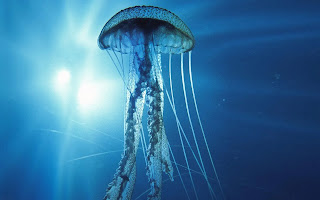Exploring the World's Most Painful Animal Bites: From the Bullet Ant to the Giant Desert Centiped
The animal kingdom is home to a wide variety of creatures, many of which have developed powerful defences to protect themselves from predators. While some animals rely on camouflage or agility to avoid being caught, others have evolved venomous bites or stings that can cause intense pain or even death. In this article, we'll take a closer look at some of the most painful bites in the animal kingdom, including the bullet ant, box jellyfish, stonefish, tarantula hawk wasp, and giant desert centipede. We'll explore the symptoms and effects of these bites, as well as tips for avoiding them and seeking medical attention if necessary.
The bullet ant, also known as Paraponera clavata, is found in Central and South America. Its sting is considered to be one of the most painful insect stings in the world, with a pain level that has been compared to being shot with a bullet or having hot metal poured over the affected area. The venom of the bullet ant contains a potent toxin that causes intense pain, swelling, and muscle spasms. The pain can last for up to 24 hours, and some people may experience other symptoms such as fever, headache, and nausea. Despite its painful sting, the bullet ant plays an important role in the ecosystem, as it preys on other insects and helps to control their populations.
The box jellyfish, also known as Chironex fleckeri, is found in the waters around Australia and Southeast Asia. Its venomous sting is considered to be one of the most deadly in the world, with the potential to cause heart failure and death in a matter of minutes. The venom contains toxins that attack the nervous system, skin cells, and heart muscle. The sting of a box jellyfish causes immediate and intense pain, which is often described as feeling like being electrocuted or burned. Other symptoms can include nausea, vomiting, difficulty breathing, and muscle cramps. It's important to seek immediate medical attention if stung by a box jellyfish, as prompt treatment can be life-saving.
The stonefish, also known as Synanceia, is found in the Indo-Pacific region. It has venomous spines that can cause intense pain, swelling, and even paralysis. The venom of the stonefish contains a potent toxin that attacks the nervous system, causing severe pain and muscle weakness. The pain of a stonefish sting is often described as being like a sharp, stabbing pain that radiates from the affected area. Other symptoms can include nausea, vomiting, and difficulty breathing. In severe cases, the venom can cause respiratory distress and even death. To avoid being stung by a stonefish, it's important to wear protective footwear when walking on beaches or swimming in the ocean.
The tarantula hawk wasp, also known as Pepsis, is found in the southwestern United States and Mexico. Its sting is considered to be one of the most painful insect stings in the world, with a pain level that has been compared to being stung by a hot iron. The venom of the tarantula hawk wasp contains a potent toxin that attacks the nervous system, causing intense pain and muscle spasms. The pain of a tarantula hawk wasp sting can last for several minutes and can be accompanied by other symptoms such as swelling, redness, and nausea.
The giant desert centipede, also known as Scolopendra heros, is found in the southwestern United States and Mexico. Its bite is considered to be very painful and can cause immediate, intense burning and stinging sensations. The venom of the giant desert centipede contains a potent toxin that attacks the nervous system, causing muscle spasms, nausea, and vomiting. In some cases, the venom can also cause an allergic reaction, which can lead to more severe symptoms such as difficulty breathing and anaphylaxis.





Comments
Post a Comment